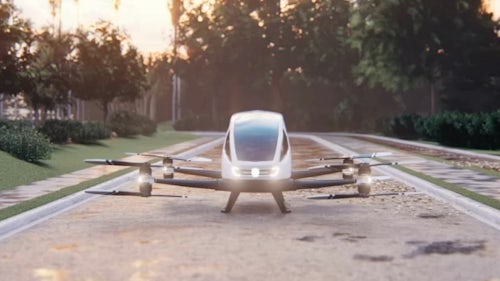E/E systems development for electric vertical takeoff and landing vehicles
Although momentum is building for electric vertical takeoff and landing (eVTOL) vehicles, there’s still many challenges with E/E systems development. This white paper covers:
- Key trends in the eVTOL aircraft market
- Implications of eVTOL market trends for aircraft manufacturers
- A breakdown of the complexity of eVTOL systems design
- Characteristics of a successful electrical and electronic (E/E) systems development platform
- How Siemens’ Capital E/E systems development solution enables aircraft manufacturers to innovate and deliver eVTOL solutions to market faster and more cost-effectively
Learn more about solutions available to help manufacturers tackle the challenges of eVTOL development.
eVTOL market trends and their implications for eVTOL startups
What are some of the key market trends for eVTOL startups? Competition is fierce as hundreds of companies are trying to develop electric, urban air mobility vehicles, but only the first few to reach production will win. In addition, as eVTOL startups work in a fast-paced environment, it can be difficult to manage systems complexity, resulting in unwanted development and test iterations. Finally, eVTOL startups will likely choose to subcontract production work to external manufacturing facilities and thus will need to build partnerships and practical digital communication channels with their suppliers will minimizing the struggle to respond to change.
eVTOL complexity and the new challenges
The complexity of eVTOL E/E system design introduces new challenges as these types of aircraft rely on electrical power for propulsion. These include:
- Manual approaches undermined by human error, resulting in integration issues
- Selecting a battery with maximum energy density - essential to commercial viability
- Conducting the necessary verification, checks and analysis as data must be re-entered manually many times
Essentials for success in the air mobility field - E/E systems development
Given the numerous obstacles in the air mobility field, what are some of the characteristics of an E/E systems development solution that are essential for success? Some solutions include enabling strong mutli-disciplinary integration, employing a digital twin to represent the E/E system, and employing a digital thread and digital data continuity to connect the full product life cycle.
Siemens Xcelerator is an integrated portfolio of software, services, and an application development platform that speeds the digital transformation cycle and unlocks a powerful industrial network effect for eVTOL startups.
Read our white paper now to learn more about how Siemens Xcelerator eliminates data silos and simplifies certification and compliance for effective E/E system design.
